My friend Karl recently challenged me on Facebook to name ten books that have changed my life. Or, more accurately, I was to “write down ten books that have affected your life in some way and tag ten friends including me so I can see your choices as well.” Ignoring the fact that the word “affected” is “abominably vague” (as Karl also noted), here’s my list. It’s eclectic, to be sure, with fiction, poetry, theology, and more.
The books follow in no particular order.
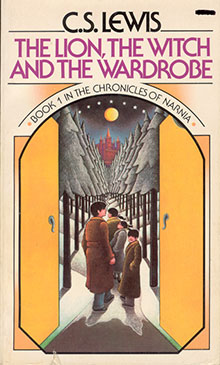 1. The Chronicles of Narnia – C.S. Lewis
1. The Chronicles of Narnia – C.S. Lewis
This series served, in many ways, as my gateway to both fantasy and theology. As a child, it was my favourite series of books, and I still reread them all every few years. The Christian symbolism is not something I become aware of until some years later, when my pastor explained it to me. At first I rebelled at the knowledge, but eventually the secret of it (Another story beneath! Deeper magic!) led me to read more of C.S. Lewis, including…
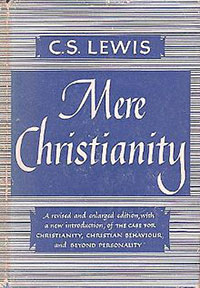 2. Mere Christianity – C.S. Lewis
2. Mere Christianity – C.S. Lewis
This. This was my first introduction to serious Christian thought. My first introduction, as it were, to theology. More detailed study into the various focuses of Christian theology came later, as did wide reading in the writings of Christians from across the centuries. But Mere Christianity was, for me, where it all began. And for that, I am truly grateful to C.S. Lewis.
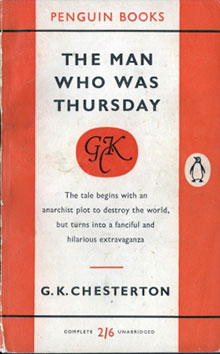 3. The Man Who Was Thursday – G.K. Chesterton
3. The Man Who Was Thursday – G.K. Chesterton
This book was my first introduction to Chesterton, and thus an introduction to numerous other important books in my life (like Heretics, Orthodoxy, Napoleon of Notting Hill, etc). The ability to make the ordinary strange is a particular gift of Chesterton’s and a prevailing theme in much of his other writing; but nowhere is the concept so well enfleshed as it is in The Man Who Was Thursday. This book is my favourite novel, bar none—even if (or perhaps because?) it so often confounds me.
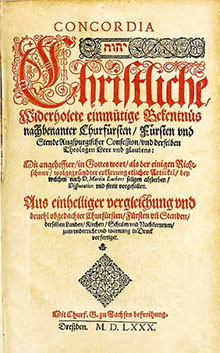 4. The Augsburg Confession (Confessio Augustana) – Philip Melanchthon
4. The Augsburg Confession (Confessio Augustana) – Philip Melanchthon
The primary Lutheran confession of faith, important not only for articulating Lutheran theology over/against contemporary abuses, but also for stressing the theological continuity of Lutheranism with the faith of the ancient Church. “The churches among us,” Melanchthon writes, “do not dissent from the Catholic Church in any article of faith.” Indeed.
 5. The Freedom of a Christian – Martin Luther
5. The Freedom of a Christian – Martin Luther
Too many people (including too many Lutherans) seem to think that salvation by grace through faith alone means works are excluded from the Christian’s life. Nothing could be further from the truth. In this book, Luther explains the proper relationship between faith and works. While only the former justifies before God, he writes, both are nevertheless necessary in the Christian’s life. This little work, too seldom read, also introduces a number of other important Lutheran ideas, as I’ve summarized elsewhere: “Here Luther touches on the simultaneous sinner/saint state of Christians; explains Law and Gospel; argues justification by faith alone; defends the necessity of works as a fruit of faith; discusses what makes works ‘good’; expounds on the priesthood of all believers (both what it does and doesn’t mean); and delves into his theology of vocation, as well as hinting at the doctrine of the ‘two kingdoms.’”
 6. The Spirituality of the Cross – Gene Edward Veith
6. The Spirituality of the Cross – Gene Edward Veith
This is the quintessential introduction to Lutheranism for those wanting to know more about “the way of first evangelicals.” Veith provides a winsome case for the Evangelical Catholic (aka Lutheran) tradition, taking readers on a tour through the major points of Lutheran theology in clear and eminently readable prose. And it never descends into mere academic musings; this is a theology that is forever relevant and applicable to Christians today. Looking for a sacramental evangelicalism? A protestantism that is, at its core, nevertheless catholic? Veith explains why Lutheranism is the church you’re seeking.
 7. Poems (1633) – John Donne
7. Poems (1633) – John Donne
Where do I begin? Donne’s poetry, whether focused on the earthly or the divine—and really, Donne would say (and I would agree), everything in creation counts under the category of “divine”—is deeply profound and deeply moving. Meaning is packed tightly into each line, each phrase, like a compressed spring waiting to be released. The Holy Sonnets have especially been important to me in my own spiritual journeys. While what I’m writing here applies to any edition of Donne’s English poetry, there’s something particularly pleasing about holding my reproduction copy of the 1633 edition, as I reflect on Donne’s Holy Sonnets. It provides a tactile experience, a weight in my hands to mirror the weight in my heart—a heart that Donne (and God) batter, for my good.
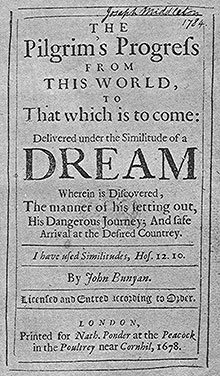 8. The Pilgrim’s Progress – John Bunyan
8. The Pilgrim’s Progress – John Bunyan
I know what you’re thinking: “That old book? That long-on-words and short-on-plot book? That thinly-veiled not-at-all-veiled allegory? Why that book?” I know this book isn’t everyone’s cup of tea, but it’s been important to me for a number of reasons, not least of all because Bunyan’s thoughts have helped me formulate my understanding of what literature is for. I also acknowledge this book for Bunyan’s theology of despair, a condition in which I have an interest both personally and academically. Christian’s encounter with Giant Despair is, for those interested, made all the more illuminating when reading it alongside Bunyan’s own spiritual battle with despair (as described in Grace Abounding to the Chief of Sinners).
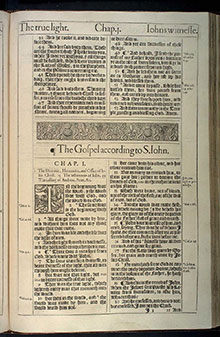 9. The Gospel of John
9. The Gospel of John
While the Bible in its totality has had an obviously massive impact on my life, the Gospel of John is particularly dear to me. St. John’s surprisingly simple vocabulary make accessible complex theological ideas—mirroring, in a way, the enfleshing of the Divine Word in the Man Jesus. God humbles Himself that we may be brought up—He discloses Himself that we might to know Him Who made us.
 10. The Odyssey – Homer
10. The Odyssey – Homer
I am a lover of classical mythology and culture, and for me there is no greater story from the era than Homer’s Odyssey. This text led to my wider interest in the literature and philosophy of Ancient Greece and Rome—studies which have significantly impacted how I view all other literature and philosophies.
I can’t help but feel I’ve cut too many books that should also be on this list, just in order to keep it to ten. An expanded list must needs include some classic science fiction (such as the works of Jules Verne and H.G. Wells), children’s adventure stories (Hatchet and My Side of the Mountain), philosophy (Plato), drama (Shakespeare) fantasy (JRR Tolkien), and more from the Inklings (especially Charles Williams’ The Place of the Lion and War in Heaven). I should also mention the first book of C.S. Lewis’ Space Trilogy, as the description of Ransom learning alien language is what first kindled my interest (and subsequent degree) in Linguistics.
But there is one other book I just must mention, and that is C.S. Lewis’ The Great Divorce. Now what is so important about this book you ask? Well, it’s responsible (at least in part) for my marrying Leah. Some years ago, not long after Leah and I had first met, we fell into conversation at a large-group dinner event. We began by chance to speak of Lewis, zeroing in on The Great Divorce. I made some remark about the characterization of George MacDonald in the text. But Leah promptly corrected me, telling me in no uncertain terms I was wrong. Surprised, I actually went home that night and reread the book. Leah was right: I was wrong. About that time I began to realize just how attractive Leah was….
I count it a great blessing that Leah and I can talk so easily together about big ideas, and that each of us can learn from (and correct) each other. But it’s never lost on me that The Great Divorce led, in our case, to a rather Great Marriage.
———————
Edit (August 27): I have no idea how I forgot to put The Screwtape Letters on this list. Major oversight.
Tags: 1633, Bible, c.s. lewis, chronicles of narnia, Confessio Augustana, Despair, G.K. Chesterton, Gene Edward Veith, Gospel of John, great books, holy sonnets, Homer, John Bunyan, John Donne, Martin Luther, Mere Christianity, philip melanchthon, philipp melanchthon, Poems, Spirituality of the Cross, The Augsburg Confession, The Freedom of a Christian, The Great Divorce, The Lion the Witch and the Wardrobe, The Man Who Was Thursday, The Odyssey, The Pilgrim's Progress, The Way of the First Evangelicals
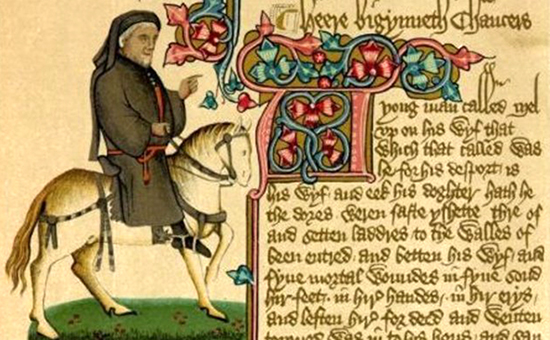
 1. The Chronicles of Narnia – C.S. Lewis
1. The Chronicles of Narnia – C.S. Lewis 2. Mere Christianity – C.S. Lewis
2. Mere Christianity – C.S. Lewis 3. The Man Who Was Thursday – G.K. Chesterton
3. The Man Who Was Thursday – G.K. Chesterton 4. The Augsburg Confession (Confessio Augustana) – Philip Melanchthon
4. The Augsburg Confession (Confessio Augustana) – Philip Melanchthon 5. The Freedom of a Christian – Martin Luther
5. The Freedom of a Christian – Martin Luther 6. The Spirituality of the Cross – Gene Edward Veith
6. The Spirituality of the Cross – Gene Edward Veith 7. Poems (1633) – John Donne
7. Poems (1633) – John Donne 8. The Pilgrim’s Progress – John Bunyan
8. The Pilgrim’s Progress – John Bunyan 9. The Gospel of John
9. The Gospel of John 10. The Odyssey – Homer
10. The Odyssey – Homer
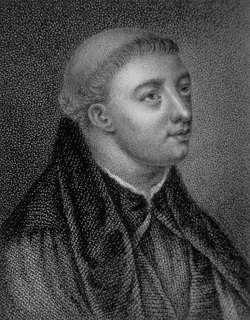 April 1 might be “April Fool’s Day,” but it is also (at least as of this year) “Whan That Aprille Day.” The name is drawn from the opening lines of the Prologue to the Canterbury Tales: “Whan that Aprille, with his shoures soote / The drogthe of March hath perced to the roote …. Than longen folk to goon on pilgrimages.”
April 1 might be “April Fool’s Day,” but it is also (at least as of this year) “Whan That Aprille Day.” The name is drawn from the opening lines of the Prologue to the Canterbury Tales: “Whan that Aprille, with his shoures soote / The drogthe of March hath perced to the roote …. Than longen folk to goon on pilgrimages.”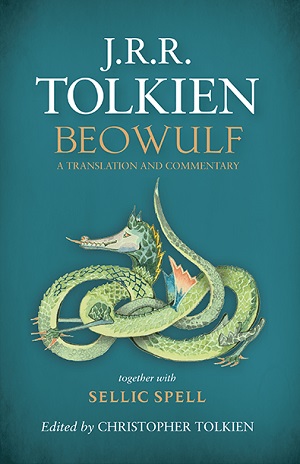 News last week that a
News last week that a  On this day—February 27—our Anglican friends remember the George Herbert. Let us join with them in doing so.
On this day—February 27—our Anglican friends remember the George Herbert. Let us join with them in doing so.


